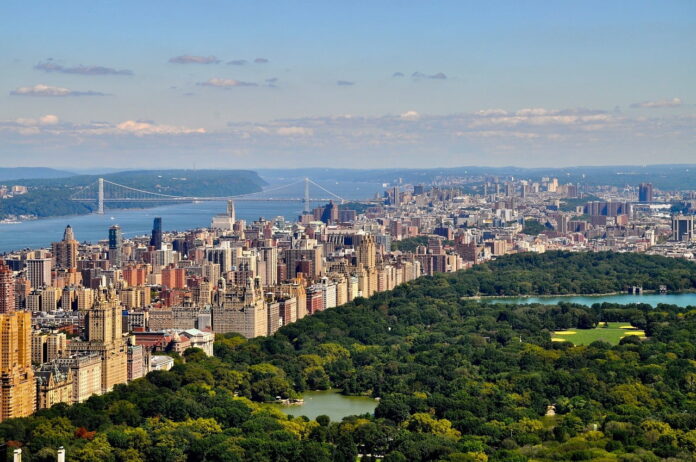In the face of rapid urbanization, cities around the globe are reimagining their landscapes to foster a more sustainable environment. Urban greening, a movement to integrate more natural elements into cityscapes, emerges as a pivotal shift towards sustainability. This approach not only beautifies urban areas but also delivers a multitude of ecological, social, and economic benefits. From mitigating the urban heat island effect to enhancing public health, the greening of urban spaces is a multifaceted solution addressing the pressing challenges of modern cities.
Urban Greening: A Sustainable Shift
Urban greening represents a transformative approach to city development that prioritizes the incorporation of green spaces such as parks, green roofs, street trees, and gardens into the urban fabric. This shift acknowledges the limitations of hardscapes dominated by concrete and steel and seeks to reintroduce nature into the daily lives of city dwellers. By doing so, urban greening helps to reconnect urbanites with the natural environment, fostering a sense of stewardship and ecological awareness. The concept extends beyond mere aesthetics; it is a strategic move to create resilient urban ecosystems capable of withstanding environmental and social challenges.
The sustainable shift towards urban greening is not just a reaction to environmental pressures but also a proactive measure to enhance the quality of life in cities. It involves a rethinking of urban planning and design, where green infrastructure is not an afterthought but a fundamental element of cityscapes. This transition is marked by a collaborative effort between urban planners, environmentalists, policymakers, and communities to redefine what it means to live in a city. Urban greening initiatives are being integrated into policy frameworks, with many cities adopting targets for increasing green space per inhabitant or implementing green building standards.
As cities become denser, the importance of green spaces becomes even more pronounced. Urban greening acts as a counterbalance to the concrete jungle, providing breathing spaces that serve both ecological functions and as havens for recreation. It is a multidimensional approach that not only considers the spatial distribution of greenery but also its accessibility and connectivity. Through careful planning, urban greening contributes to the creation of green networks that facilitate movement and biodiversity, linking isolated patches of nature to form a cohesive and sustainable urban ecosystem.
Benefits of Green Spaces in Cities
The introduction of green spaces within urban environments boasts a wide array of benefits, ranging from environmental to health-related and economic advantages. Ecologically, green spaces act as the lungs of the city, improving air quality by absorbing pollutants and releasing oxygen. They also contribute to the reduction of the urban heat island effect, where built-up areas are significantly warmer than their rural surroundings. This is achieved through the natural cooling provided by plants and trees, which can lead to a decrease in energy consumption for cooling buildings during hot weather.
The health benefits of green spaces in cities are undeniable. Access to parks and gardens has been linked to improved mental wellbeing, with natural environments acting as a buffer against stress and promoting relaxation. Physical health is also bolstered by the presence of greenery, as it encourages outdoor activities and exercise. Green spaces can serve as community hubs, fostering social interaction and cohesion, which are essential for a vibrant and healthy urban life.
From an economic standpoint, urban green spaces can enhance property values, attract businesses, and boost tourism. A greener city is often perceived as a more desirable place to live, work, and visit, which can drive local economies. Additionally, green infrastructure can offer cost savings by providing ecosystem services such as stormwater management, reducing the need for expensive engineered solutions. The presence of greenery can also lead to indirect economic benefits by improving public health outcomes, thereby reducing healthcare costs.
Strategies for Urban Green Development
To successfully integrate greening into urban development, cities must adopt comprehensive strategies that consider local contexts and engage a wide range of stakeholders. One such strategy is the incorporation of green building practices, which include the use of green roofs and walls that not only add greenery but also improve building efficiency. Urban planners can also prioritize the protection and enhancement of existing natural areas, ensuring they are preserved and seamlessly integrated into the urban grid.
Another key strategy is to create incentives for private developers to include green spaces in their projects. This could be done through zoning laws, tax breaks, or development credits, encouraging the adoption of green principles in private sector developments. Public-private partnerships can also play a significant role in expanding urban greenery, leveraging the resources and expertise of both sectors for mutual benefit.
Lastly, community involvement is crucial for the success of urban greening initiatives. Engaging citizens in the planning, creation, and maintenance of green spaces ensures that these areas meet the needs and desires of local residents, fostering a sense of ownership and responsibility. Educational programs can raise awareness about the benefits of green spaces, while volunteer opportunities can empower individuals to take an active part in the greening of their city. By involving the community, urban greening becomes a collective endeavor that enriches the social fabric of the city.
The sustainable development of urban space through greening is an essential step toward creating livable, resilient, and vibrant cities. Urban greening offers a plethora of benefits that enhance the quality of life for residents, contribute to the health of the environment, and stimulate economic growth. By adopting strategic and collaborative approaches to green development, cities can ensure that these benefits are maximized and sustained for future generations. As the global population continues to gravitate towards urban centers, the greening of cities becomes not just a desirable vision but a necessary evolution in the way we design and inhabit urban spaces. The challenge now lies in turning this vision into a reality through the collective efforts of urban planners, policymakers, businesses, and citizens alike.
